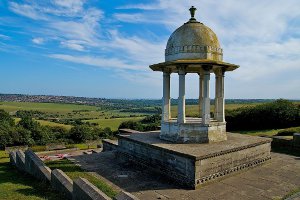As covered in ‘Late 1915’, there were many hospitals treating wounded servicemen in Brighton.
From an architectural point of view, the most interesting building pressed into medical service was the Royal Pavilion. Started in 1787 as a seaside retreat for the Prince of Wales (later King George IV), it features an astonishing mix of styles: gothic, indo-saracenic and chinese. It is fairly certain that none of the people involved in the design had ever been to the countries in question. What they created was their interpretation of a grand Indian or Chinese house. Queen Victoria didn’t approve (mainly because it lacked privacy) so it was sold to the Council. It had a number of uses in the following decades. In the logic of the time, a building with Indian connotations was a good location for a hospital to treat wounded Indian soldiers. As a consequence, it became the Royal Pavilion Indian Hospital. I can imagine wounded soldiers being asked whether the surroundings made them feel at home, and being completely baffled. Even a Maharajah would probably struggle to identify the styling cues.
For Patrick, the presence of many Indian troops would have provided a reminder of his service in that country just over five years earlier.
Despite the excellent work of the staff, there were soldiers whose lives could not be saved. In accordance with their customs, Hindu and Sikh soldiers were cremated in the open air. Special dispensation had to be granted to allow this. Under the 1902 Cremation Act, open air cremations were, for all practical purposes, forbidden. Cremations had to be 50 yards from a public highway, 200 yards from a dwelling and not to cause a nuisance. In order to comply with the legislation, a remote site was chosen was high on the South Downs outside of the town. It is a 2 km walk from the nearest bus stop. After the war, the Chattri Memorial (pictured) was constructed on the site. As the photo shows, it is a stunning location.
